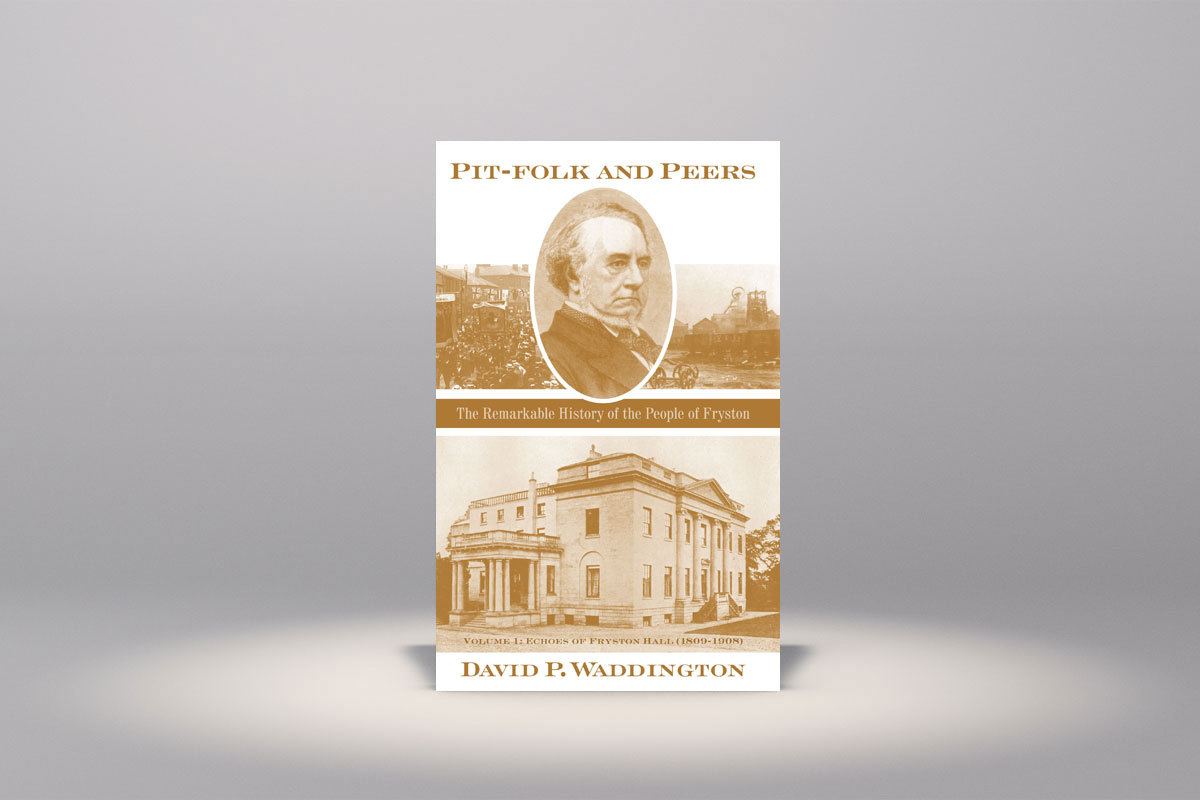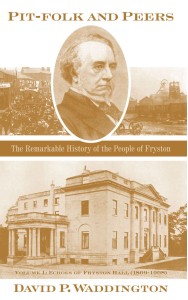In this extract from Pit-folk and Peers, David Waddington looks at the earyl courtship of Florence Nightingale and Richard Monckton Milnes.
Milnes and Florence Nightingale had first met in 1842 when both were the guests (Nightingale along with the rest of her family) of Lord and Lady Palmerston. Nightingale’s biographers agree that, as the relationship between Nightingale and Milnes grew warmer, Nightingale’s mother was increasingly hopeful that it would develop into marriage:
A wedding between her younger daughter and the eminent and eligible Mr Richard Monckton Milnes of Fryston Hall in Yorkshire was exactly the sort of match of which Fanny Nightingale had dreamed. He was a man of fortune, although of course she wanted more than money for her daughter. She had read Milnes’s speeches to Parliament and his volumes of poetry, and was certain that he was a poet with a following and a politician with a future […] So what if he outraged opinion from time to time? The Nightingales were sufficiently worldly to bear a little scandal, and Fanny Nightingale could see that marriage to Milnes would put her Florence right at the centre of British political and artistic life.
Though their attraction was clearly mutual, Nightingale and Milnes each harboured reservations about the prospect of getting married. Nightingale, for her part, had unreserved admiration for Milnes’s consistently humanitarian attitude: ‘He treated all his fellow mortals as if they were his brothers and sisters,’ she once remarked.417 She delighted in the fact that Milnes was such a staunch proponent of education for factory workers, penny savings banks for the working-class, and the abolition of capital punishment. She took great satisfaction from his sympathy for the famine-stricken Irish (whom he had controversially taken time to visit in order to help organise relief measures), for the pressure he was exerting for factory reform, and for his introduction of a Bill for establishing juvenile reformatories. All of these issues were extremely close to her heart. Thus, as Sattin explains:
Her issue was not with the man. She admired his mind, enjoyed his company, and later would refer to him as ‘the man I adored’. Her objection, as ever, was to the role of women in the institution of marriage. Being married would give her no more freedom than she had at the present time, for she would merely swap one set of constraints and obligations for another. If she married, the legal and financial responsibility for her care would pass from her parents to her husband.
Nightingale knew full well that a life spent hosting breakfast parties and gatherings at Fryston Hall would constitute a serious obstacle to her calling to work in the service of God. ‘And yet, if there were to be a husband, Milnes would do very well indeed.’ Thus, ‘She continued to play for time while she weighed up the possibilities.’
Milnes, in turn, was slightly ambivalent about his possible liaison with Florence Nightingale. In a letter to his sister, Harriette, written in 1846, he was clearly wary of his father’s preference for aristocratic ‘breeding’ rather than accumulated wealth. ‘I fancy Papa looks on the Nightingales as rather vulgar people,’ he wrote, and might therefore look upon their marriage ‘as rather a descent in society’. His portrayal of Nightingale was not unequivocally positive:
F.N. is certainly a very remarkable person, with a gravity of deportment which I can conceive many people disliking and a clear observant critical way of looking at things, which many might dislike, but which I find analogous to my own. She is a companion worthy of any man of intellect.
By this time, Nightingale had already rejected Henry Nicholson’s proposal of marriage in 1845, which caused a permanent rift between their families. This was something she revealed to Milnes, though it did nothing to deter him. He accompanied the Nightingale family on various public outings, such as meetings of the British Association for the Advancement of Science in Southampton in 1846, and in Oxford one year later. During the latter visit, Milnes joined Nightingale and her father at a luncheon engagement with a famous naturalist who kept a three-month-old tame bear in his rooms. Nightingale subsequently recalled that the bear had ‘climbed like a squirrel for the butter on the table’. Eventually, however, the animal ‘became obstreperous’ and had to be shoo-d out into the garden, where it continued to rear up and bellow. ‘Let alone, I’m going to mesmerise it,’ Nightingale protested in defiance of her father’s attempt to restrain her. But it was Milnes who stepped forward and, in Nightingale’s words, ‘followed [my] suggestion and in ½ minute the little bear began to yawn, in less than 3 min. was stretched fast asleep on the gravel’.
Sattin speculates that it was during this visit that Milnes made the first of a series of marriage proposals to Nightingale, who was, therefore, forced to consider whether or not to go down the conventional path of marriage or fulfil her calling to care for others. Sensing the anguish Nightingale was experiencing, some family friends, the Bracebridges, obtained her parents’ permission to have their daughter join them on a three-month tour of Italy in the autumn of 1847. While in Rome she visited the Vatican and Sistine Chapel; even more lasting in its impact was the time Nightingale spent visiting local orphanages and convents. On one such occasion, just as she was leaving, ‘her madre warned her that God “calls you to a very high degree of perfection. Take care, if you resist you will be very guilty.”’

